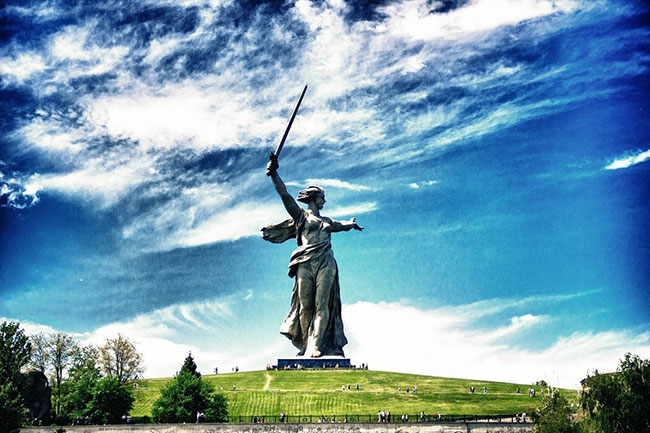
The Battle of Stalingrad, which turned the tide of World War II 80 years ago when German forces capitulated to the Red Army, remains a powerful symbol of patriotism in Russia, stresses Agence France Press.
One of the largest battles in history, the fighting raged for more than six months in 1942 and 1943 before the Russians defeated Nazi soldiers trapped in the ruined city in the depths of winter.
By the time it was over, on February 2, 1943, between one and two million people had died.
Located some 900 kilometres (559 miles) southeast of Moscow, pre-war Stalingrad was a crucible of Soviet industry with factories in the city of 600,000 people churning out military hardware. Stalingrad also acted as a gateway to the oil fields of the Caucasus as well as to Central Asia and the Caspian Sea.
The battle began in July 1942 and lasted for 200 days of grinding aerial bombardments and house-to-house fighting between the Germans on one hand and Soviet soldiers and civilians on the other.
The Soviets were under strict orders from Stalin to stand their ground. "Not a single step back." Finally, the Red Army staged a forceful counter-offensive, overcoming the enemy troops which were trapped and left to starve in the Soviet winter. In January 1943, the Soviets launched a final offensive, retaking the ruined city district by district until the last German troops capitulated on February 2, 1943.
As a result of Operation “Ring”, heavy fighting ensued from the very first days. On January 10, the liquidation of the enemy group began. In fact, as we learned later, there were more than 300 thousand in it, writes famous Russian historian of World War II Yuri Rubtsov.
By the end of the first day of the offensive, the enemy defenses had been broken through to a depth of 6-8 km. By January 16, the territory of the encirclement area had decreased by two-thirds. The enemy troops were squeezed into the territory, the length of which from north to south was 20 km, and from west to east – 3-4 km.
The remnants of the German group began to retreat. Its supply could only be carried out by dropping containers on parachutes, but the latter quite often fell on the battle formations of the advancing troops. It was during the Soviet counter-offensive near Stalingrad that the forces of German transport aviation were forever undermined, losing about 500 aircraft here and not regaining their strength until the end of the war.
The fighting continued until February 2, 1943, the last pockets of enemy resistance were liquidated, there was a mass surrender of Germans, Italians and Romanians into captivity. In total, during the Operation “Ring”, about 113 thousand military personnel were captured by our troops, including 2.5 thousand officers, of which 22 were generals. 22 enemy divisions were completely destroyed.
The defeat of the largest grouping of the Wehrmacht near Stalingrad and the subsequent successful actions of the Red Army on the Kursk salient secured a radical turning point in the course of the war, stresses Yuri Rubtsov.
We have our Statue of Victory!

"The Motherland Calls" – a 85-metre (279-foot) sculpture in the Stalingrad battle area.
read more in our Telegram-channel https://t.me/The_International_Affairs

 15:21 02.02.2023 •
15:21 02.02.2023 •






















